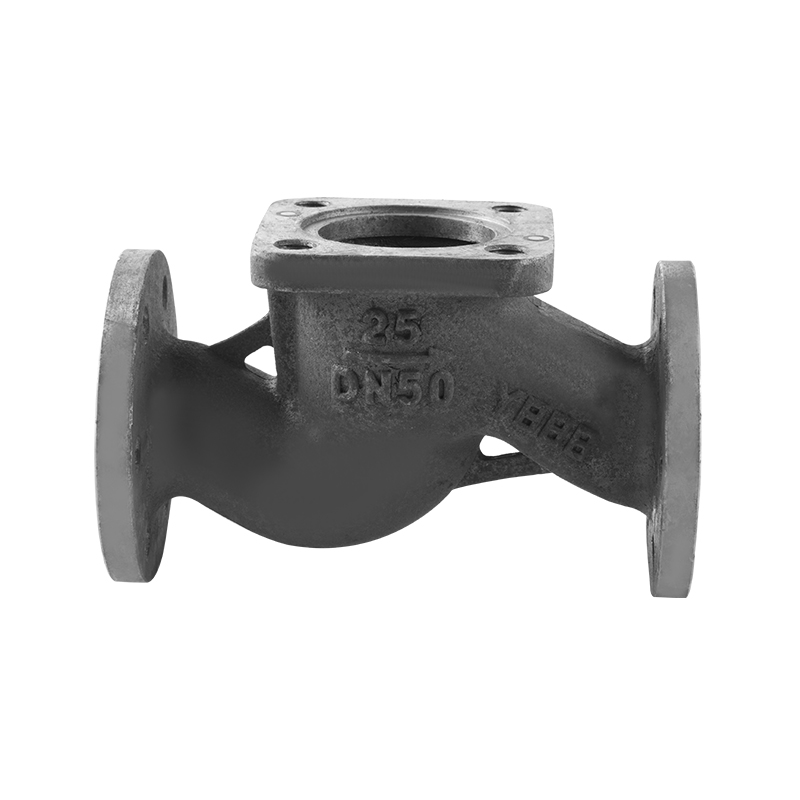The Development of Metal Pipe Valve Body Casting Parts
Industry News-The metal pipe valve body casting parts have evolved significantly over the years, benefiting from advancements in materials, casting technologies, and design techniques. This article delves into the development of these parts, highlighting the innovations that have shaped their production and the key factors driving the ongoing evolution of the industry.

At their core, metal pipe valve body casting parts serve the critical function of housing valves, which are used to regulate, control, or direct the flow of fluids and gases through a system. Whether it's in a high-pressure pipeline or a fluid distribution network, the valve body must withstand conditions such as high temperatures, corrosion, and mechanical stress. The material used to create these valve bodies must be robust, durable, and capable of handling such demands.
Traditionally, these parts were made through sand casting or die casting, but with the advent of more modern methods, manufacturers have been able to enhance the structural integrity, precision, and overall performance of the metal pipe valve body casting parts. As the global demand for energy-efficient, high-performing systems continues to grow, the need for durable, reliable valve bodies has driven innovation in casting technologies and materials.
Historically, metal pipe valve body casting parts were produced using traditional sand casting methods, which involved creating a mold from sand and pouring molten metal into the cavity. While this process was relatively inexpensive and widely used, it had certain limitations, including lower precision, a slower production rate, and issues with defects such as air pockets or porosity.
With the advancement of technology, manufacturers began exploring alternative casting techniques like investment casting and die casting. These methods offered greater precision, allowing for more intricate designs, smoother surfaces, and fewer defects. Investment casting, for example, involves creating a wax pattern, coating it with a ceramic shell, and then melting the wax away. This process provides a higher level of detail and better tolerance, making it an ideal choice for producing metal pipe valve body casting parts that require high precision.
In addition to the change in casting methods, the materials used for producing metal pipe valve body casting parts have also advanced significantly. While traditional materials such as gray iron and cast steel were commonly used, modern materials like stainless steel and bronze alloys have become more prevalent, thanks to their corrosion resistance and higher strength.
As industries have become more demanding, casting technologies have evolved to meet the increasing requirements for durability, precision, and performance. Computer-aided design (CAD) and computer-aided manufacturing (CAM) systems have revolutionized the design and production of metal pipe valve body casting parts. These systems allow manufacturers to simulate and optimize the casting process, ensuring that the final product is free from defects and that it meets the exact specifications required by the customer.
One of the significant developments in the casting process is the use of 3D printing (additive manufacturing) to create complex molds and even final parts. This technology has opened up new possibilities for metal pipe valve body casting parts production, particularly when it comes to creating intricate internal geometries that would be difficult or impossible to achieve with traditional methods. By using 3D printing to produce molds or direct castings, manufacturers can significantly reduce production times and increase efficiency while also offering a higher degree of customization.
In industries where safety and reliability are critical, quality control plays an essential role in the production of metal pipe valve body casting parts. Castings must undergo rigorous testing to ensure they meet the required standards for pressure resistance, durability, and dimensional accuracy.
Common tests include X-ray inspections for internal defects, such as cracks or porosity, as well as ultrasonic and magnetic particle testing for surface and subsurface flaws. Pressure testing is also essential to ensure that the metal pipe valve body casting parts can withstand the forces and conditions they will encounter in real-world applications.
 En
En
 русский
русский Español
Español عربى
عربى Deutsch
Deutsch















